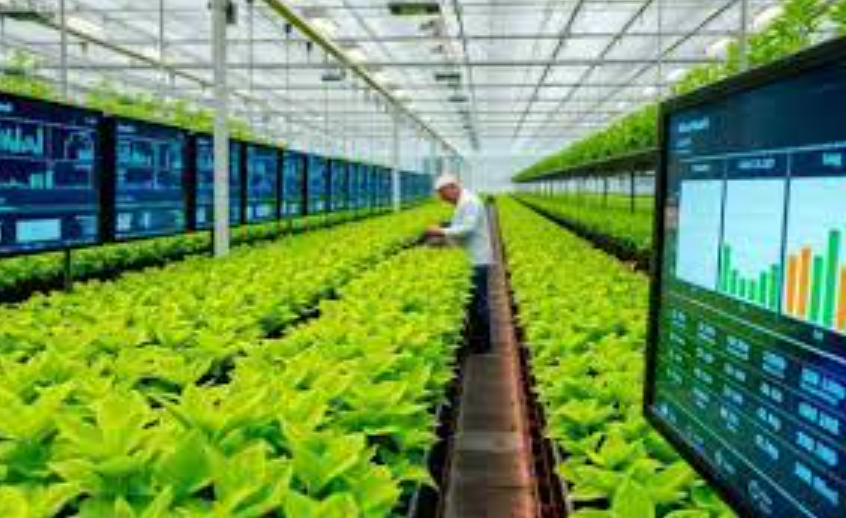In today’s evolving agricultural landscape, greenhouse management has been redefined by technology. The integration of the Picas Greenhouse Productions System with Microsoft Dynamics 365 Business Central offers greenhouse operators innovative tools to streamline and optimize their processes. But how does this integration impact the day-to-day operations of greenhouses, and what specific benefits does it bring to modern agricultural management?
What Is the Picas Greenhouse Productions System?
The Picas Greenhouse Productions System is a sophisticated software platform tailored to meet the demands of greenhouse management. Its primary goal is to enhance operational efficiency and productivity within greenhouses by utilizing real-time monitoring, data analytics, and automated controls. This technology is instrumental in creating optimal conditions for crop growth, enabling greenhouse operators to make data-driven decisions for sustainable agricultural practices.
Designed to monitor and manage key environmental factors—such as temperature, humidity, and light levels—the Picas system leverages IoT devices and sensors to provide live feedback on the greenhouse environment. This information is critical for maintaining the best possible growth conditions, ensuring high crop quality, and reducing waste through efficient resource use.
How Does Business Central Enhance Agricultural Operations?
Microsoft Dynamics 365 Business Central is an all-encompassing business management solution that combines financial operations, inventory tracking, and data analytics in one platform. In the agricultural sector, and specifically in greenhouse management, Business Central’s integration with the Picas system enables operators to unify various business processes, from financial management to resource allocation, into a single, streamlined workflow.
For greenhouse operators, Business Central’s real-time analytics and financial management tools allow seamless tracking of expenses, budgets, and overall profitability. By centralizing this data, Business Central enables operators to make strategic decisions that directly impact their greenhouse’s productivity and sustainability. Furthermore, Business Central’s collaborative features enhance team communication, making it easier to synchronize activities and manage larger operations efficiently.
How Does the Integration Between Picas and Business Central Improve Workflow?
The integration between the Picas system and Business Central creates a synergistic workflow that optimizes data synchronization, user experience, and operational efficiency. This seamless data flow allows greenhouse managers to access up-to-date information on inventory, crop statuses, and environmental conditions without needing manual data entry. The result is a system that minimizes human error, facilitates faster decision-making, and reduces time spent on administrative tasks.
One of the key features of this integration is Business Central’s intuitive dashboard, which complements the Picas system by offering a user-friendly interface. Greenhouse operators can access tailored views of performance metrics and monitor specific operational areas with ease. Enhanced communication and collaboration within teams are also supported, as users can effortlessly share insights and coordinate strategies to maintain high productivity levels.
What Are the Key Features of the Picas System?
The Picas Greenhouse Productions System offers advanced features that make greenhouse operations more efficient. Some of these include:
- Crop Monitoring: Using IoT-enabled sensors, the Picas system provides real-time insights into plant health, growth patterns, and resource utilization. This feature allows greenhouse operators to monitor crop conditions closely and make adjustments that improve yield and quality.
- Automated Climate Control: Picas enables precise regulation of essential environmental conditions, such as temperature, humidity, and lighting. Automating these processes reduces energy consumption and optimizes growth conditions, directly impacting the quality and productivity of greenhouse crops.
- Resource Management: The system’s resource allocation tools streamline the use of water, fertilizers, and other essential materials. By analyzing usage patterns, Picas reduces waste and operational costs while maintaining resource efficiency.
- Reporting and Data Analytics: Comprehensive reporting capabilities provide valuable insights into production metrics, allowing managers to make informed decisions. With this feature, greenhouse operators can adapt to market demands swiftly and strategically.
Through these features, the Picas Greenhouse Productions System empowers greenhouse operators to optimize their processes and maximize sustainability.
What Are the Business Benefits of Integrating Picas with Business Central?
Integrating Picas with Business Central offers several advantages that enhance greenhouse management. Here are the primary business benefits:
- Cost Reduction: Automation of greenhouse processes helps cut down labor costs and resource waste. The ability to automate repetitive tasks, such as scheduling and resource allocation, improves financial efficiency and minimizes unnecessary expenditures.
- Optimized Resource Allocation: With Business Central’s data management tools, operators can seamlessly monitor inventory levels, labor requirements, and resource usage. This proactive approach enables greenhouse operators to adjust their resource allocation as market demands shift, ultimately driving business growth.
- Improved Productivity: The integration allows real-time data sharing, improving communication across departments and reducing delays in information transfer. Employees can focus on high-impact tasks rather than manual administrative work, boosting overall productivity.
- Financial Management: Integrated financial reporting tools make budgeting, forecasting, and financial tracking straightforward. This capability allows greenhouse operators to allocate funds effectively and promote sustainable growth strategies.
By leveraging these benefits, greenhouse operators can significantly improve operational efficiency and adapt to evolving market demands.
What Are the Common Implementation Challenges and Solutions?
Adopting the Picas and Business Central integration can come with challenges, primarily in technology integration, staff training, and workflow adaptation. Here are some common obstacles and solutions:
- Technology Integration: Many greenhouses rely on legacy systems, which may not be compatible with Picas and Business Central. A thorough assessment of existing infrastructure is essential to identify compatibility issues. In cases where upgrades are necessary, businesses should prioritize investments in compatible systems.
- Staff Training: Shifting to an advanced software system requires a change in employees’ daily routines. Businesses can address this by implementing tailored training programs, including workshops and continuous support, to ensure that employees are comfortable and proficient with the new system.
- Workflow Adaptation: Adapting existing workflows to fit the Picas system can be challenging. Greenhouse operators should conduct detailed evaluations of their processes and consider reengineering areas where necessary to ensure seamless integration.
By addressing these challenges, greenhouses can effectively implement the Picas and Business Central system to enhance their operations.
What Future Trends Can We Expect in Greenhouse Management Technology?
Looking ahead, greenhouse management will likely see increased automation, artificial intelligence (AI), and advanced data analytics. Automated systems, such as robotic arms for planting and harvesting, will reduce labor costs and improve precision in routine tasks. When integrated with the Picas system, these technologies will enable accurate monitoring of crop conditions and nutrient levels, allowing real-time adjustments to optimize yields.
AI will play an increasingly critical role, providing predictive analytics on factors like pest infestations and growth patterns. By analyzing data from sensors and IoT devices, AI will enable greenhouse operators to fine-tune growing conditions for each crop, leading to better yields and resource use.
Enhanced data analytics capabilities will also empower greenhouse operators to visualize performance metrics more effectively. Predictive modeling, when combined with Picas and Business Central, will allow for proactive decision-making, helping greenhouses maximize efficiency and sustainability.
Conclusion:
The integration of the Picas Greenhouse Productions System with Business Central marks a transformative step in greenhouse management. This combined approach allows operators to optimize workflows, improve resource use, and make data-driven decisions that enhance productivity and sustainability. By implementing these advanced systems, greenhouse operators not only position themselves for growth but also align with global trends in sustainable agriculture.
For those looking to maximize operational efficiency, adopting the Picas and Business Central system could be an essential move toward a productive and sustainable future in greenhouse management.










